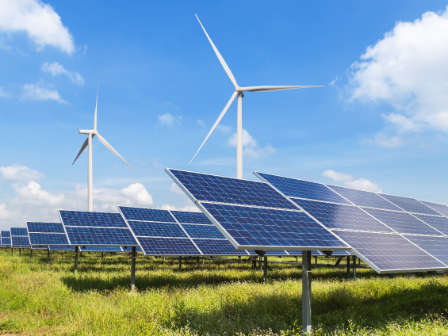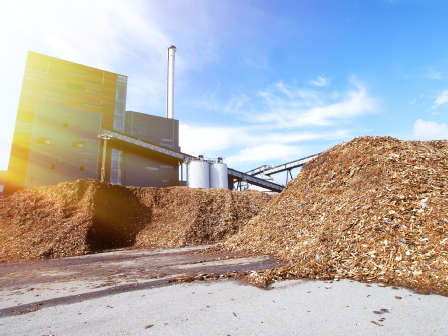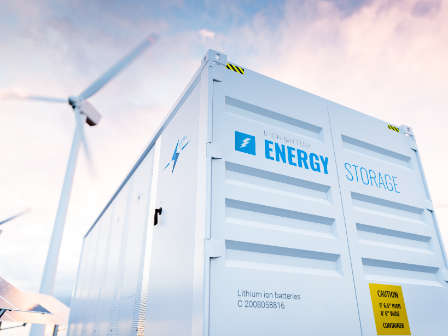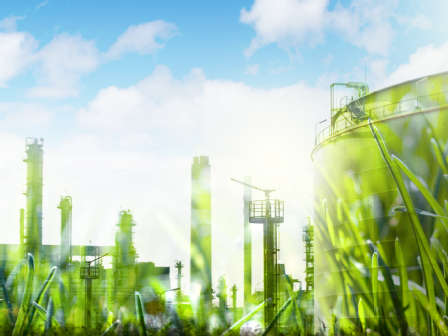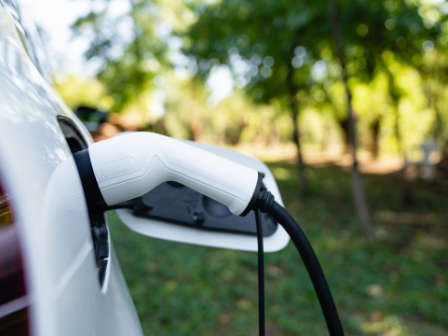
NAWEND - An environmentally friendly energy transition is feasible
A good life for everybody instead of maximization without limits
GLOBAL 2000’s and WWF’s vision for a decarbonized energy future
The system vision presented below is based exclusively on the abovementioned stakeholders' assessments and visions. APG merely provides the modeling system within the context of the zusammEn2040 project - APG's position can therefore not be derived from the statements.
As Austria's independent environmental protection organizations, GLOBAL 2000 and WWF Austria have been committed to environmental protection and nature conservation for decades. Through studies, campaigns, initiatives, cooperation and advocacy for the protection of the environment, we create awareness in the general public, politics and the economy and suggest possible ways to fight the greatest threats to our common livelihoods: global warming and the dramatic loss of biodiversity. With the NAWEND scenario, which was developed in the context of the zusammEn2040 project and outlines a nature-compatible energy transition, we want to present a nature-compatible path to a climate-neutral Austria based on circular economy, the lowest possible energy consumption, and a nature-compatible expansion of renewable energy sources.
The study aims to map out a viable path to achieve the 2040 climate neutrality target that is in harmony with the protection of the environment and doesn’t disrupt the structure of Austria's industry. In this context, "reducing the energy demand through sufficiency and efficiency" is key for the development of an environmentally friendly economic system. Due to increasing consumption and continuous economic growth, the demand for energy and resources has been increasing dramatically to date - with negative effects on the environment, people, and the climate, not only in Austria but around the world. Thus, the NAWEND scenario aims at mapping out a path for the industrial sector that replaces quantitative growth (which leads to increasing resource and energy consumption) with a qualitative economic development from 2030 onwards. This energy-saving strategy has to be complemented by a committed transition to a more sustainable mobility that prioritizes non-motorized transport and aims at electrifying the currently motorized transport, as well as a comprehensive, far-reaching approach to refurbish and modernize buildings.
Against this background, the following key propositions were developed, and APG’s energy system model was used to quantify and evaluate them:
Results at a glance
A qualitative economic development based on the principles of a circular economy and sufficiency/efficiency strategies can reduce Austria's energy and resource consumption and enable Austria to achieve its climate neutrality target by 2040 in a sustainable and environmentally friendly manner. This will also massively reduce the dependency on other countries and contribute significantly to ensuring the security of supply and creating added value within Austria.
Climate protection and nature conservation measures must be considered and implemented conjointly. The necessary expansion of renewables, grids and storage facilities can be achieved through a resource-efficient approach. At the same time, sufficient areas and river stretches can be used for nature conservation, flood protection, CO2 storage, and other beneficial measures for the ecosystem.
Switching to energy-efficient processes and renewable energies alone is not enough to decarbonize the industry. The steadily increasing resource and energy demand of energy-intensive processes must be counteracted by sufficiency/efficiency strategies based on extended product lifetimes, improved reparability, and a reliable circular economy.
Individual traffic has to be continuously reduced through the increased use of public transport and alternative mobility concepts that also strengthen non-motorized means of transport. The electrification of the remaining vehicle fleet and a shift of freight transport from road to rail will facilitate decarbonization and drastically reduce the energy demand.
Highly efficient new construction, urbanization and a high renovation rate contribute to a reduced energy and GHG footprint of the building stock. A complete switch from fossil heating systems based on oil and gas to renewables and district heating is essential for the energy transition.
Assumptions for the GLOBAL 2000’s and WWF’s system vision
The "NAWEND" scenario aims to depict a holistic economic system based on a circular economy, extended product lifetimes and sufficiency. An alternative approach is required to achieve these goals sustainably and master the energy transition in an environmentally friendly way. The central conclusion is: “The development towards a sustainable, environmentally friendly and resource-efficient energy system is possible.”
The results of the model-based studies in the context of zusammEn2040 in detail
Based on the assumptions made by GLOBAL 2000 and WWF and the model parameters entered as a result, the energy system model calculates an "optimal" energy system on the path to 2050. The most important findings are presented below:
A significant reduction in energy consumption is possible
The model results show that sufficiency and circular economy strategies can significantly reduce the total final energy consumption (energy and non-energy, including conversions in industry) in AT. The energy demand will fall by around 40 % by 2050 compared to the reference year. These massive increases in efficiency can only be achieved through an ambitious electrification strategy, additional renovation measures, and an efficient circular economy. The diagram shows that in the energy system of the future, the industry sector will be the main driver of the energy demand in the demand sectors. The energy demand in the household and services sectors, as well as in the mobility sector, is falling sharply.
The energy system will be completely decarbonized by 2040. In the energy system of the future, electricity will become the most important energy source - the electricity demand will almost double. In addition to renewable gases and electricity, district heating and biomass will also play an important role in the energy supply.
Total final consumption (energy and non-energy) in AT in TWh

Total final consumption by sector (energy and non-energy) in AT in TWh

An environmentally friendly expansion of the energy infrastructure is the prerequisite
The expansion of renewables and storage facilities will take place within an environmentally friendly framework that takes nature conservation into account. The expansion of renewables is mainly based on the integrated Austrian grid infrastructure plan (ÖNIP). These measures will result in a significant reduction of Austria’s dependency on electricity imports. The level of domestic energy generation will increase from 35 % in the reference year to 78 % in 2040 and 83 % in 2050 due to the massive expansion of renewables and the sufficiency measures. The imports that are still necessary by then - especially in the industry and aviation sectors - will be covered by green gases and green synthetic liquid fuels. In 2040, around 10 TWh of electricity will still be imported; from 2050, Austria will be a net electricity exporter.
Due to a resource-conserving approach and a reduced solid biomass yield from 2040, the demand for biomass in Austria will be sustainably covered by raw materials that regrow, which means that climate and nature conservation can be reconciled.
Energy flow diagram in 2040 in AT in TWh
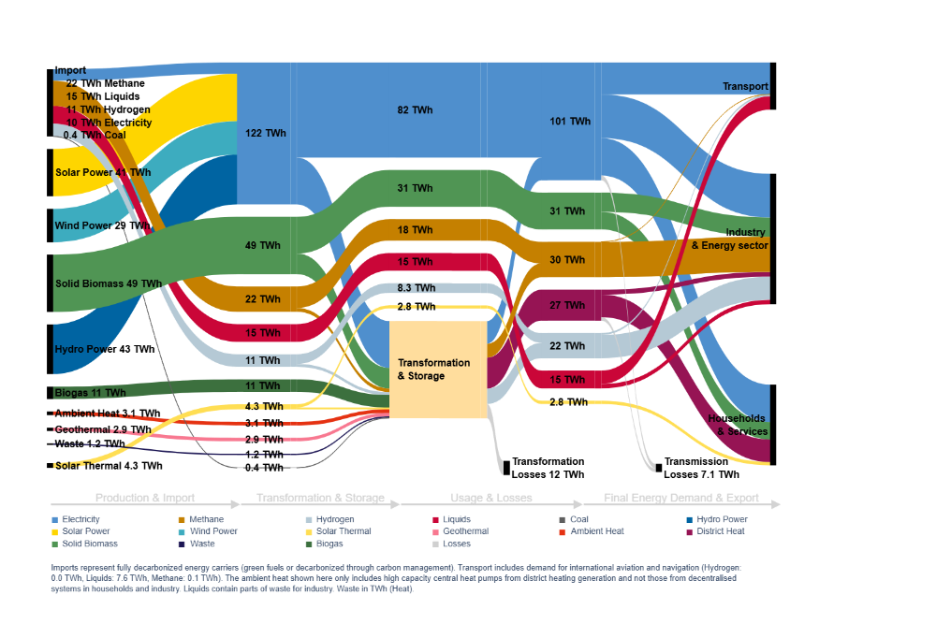
NAWEND ensures a stable, uninterrupted power supply
The electricity generation and demand time series below shows that in an environmentally friendly and decarbonized energy system, the energy demand can be met at any time throughout the year. In addition to the massive expansion of renewables, this requires adequate flexibility and storage options as well as grid expansion measures.
Electricity generation and electricity demand time series in AT in 2040 in MWh

Decarbonization in the industry sector can be achieved through efficiency, sufficiency & circular economy
The overall system modeling is based on an industrial scenario with a strong tendency towards sufficiency, circular economy, and an ambitious transition towards more sustainable technologies. As a result, the total energy demand of the industry sector (including all upstream conversion processes) can be reduced by around 15 % by 2040. The electrification of many industrial processes also contributes to the reduction in energy demand due to increased efficiency. Fossil natural gas will be replaced by the renewable energy sources biomethane and hydrogen. In the diagram below, liquid fuels also include waste-derived fuels. In 2040 and 2050, they will primarily be waste-derived liquid fuels.
Total final consumption (energy and non-energy) of the industry sector in AT in TWh
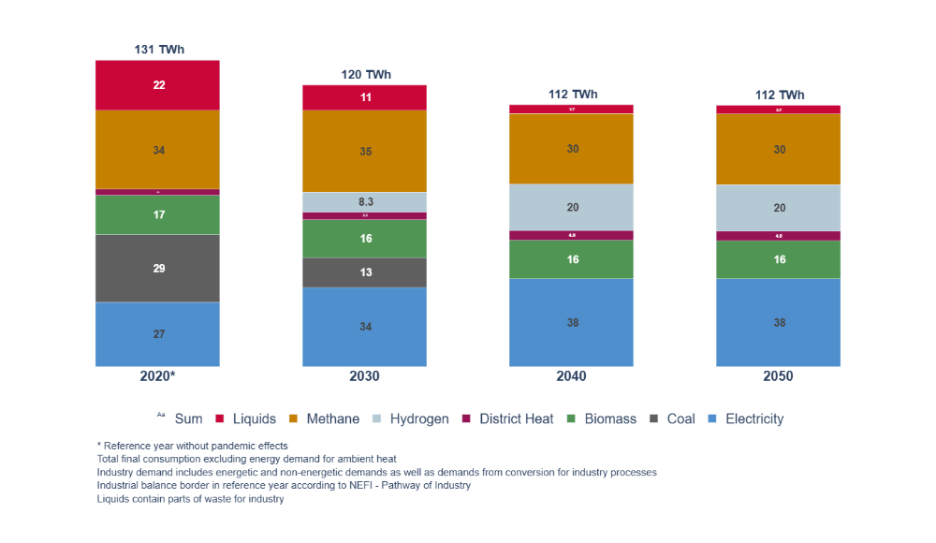
The mobility transition needs a comprehensive concept
A reduction in individual traffic by switching to public means of transport and alternative mobility concepts can significantly reduce the energy and resource requirements of the transport sector. In addition, electrification will eliminate fuel tourism by 2050. The vehicle fleet in freight and private transport will be largely electrified. Battery-powered vehicles will increasingly replace fossil fuel-powered combustion engines - this will lead to an increased efficiency and a reduction in emissions. A partial shift of freight traffic from road to rail will reduce traffic volumes and pollutant emissions. Together with the complete electrification of rail transport, this leads to better air quality and thus also contributes to environmental and health protection.
A reduction in individual traffic by switching to public means of transport and alternative mobility concepts can significantly reduce the energy and resource requirements of the transport sector. In addition, electrification will eliminate fuel tourism b

Renovation of buildings and renewable heating systems facilitate the decarbonization of the building sector
The results show that a high renovation rate makes a significant contribution to reducing the energy demand in the building sector while the same level of comfort can be maintained. In addition, the increased use of heat pumps also increases the efficiency of the energy supply. A high degree of renovation activities and the use of heating systems based on renewable energy sources will make it possible to phase out the use of oil and gas for heating systems and hot water by 2040. The expansion of renewable district heating systems will start to contribute to the decarbonization of the building sector by 2030.
Final consumption of households and the service sector in AT in TWh

Conclusion from the perspective of GLOBAL 2000 and WWF:
A nature-friendly energy transition that reconciles biodiversity and climate protection is possible. The consumption of energy and resources can be significantly reduced with a committed mobility transition, the renovation of buildings to make them more energy-efficient, and a switch to an economic system that focuses on quality, not quantity. A strong CO2 price signal, legal and planning certainty, and major private and public investments are necessary if the energy system is to be converted into a system with a cost-efficient and 100% renewable energy supply in just a few years. This means the NAWEND will boost employment and the economy.
For the energy transition to succeed, GLOBAL 2000 and WWF are calling for the following measures as a matter of urgency:
Climate neutrality by 2040 is an indispensable goal to give the nature-friendly energy transition ("NAWEND") the necessary momentum. Effective climate protection and nature conservation plans must be stipulated by law, budgeted and implemented - ideally in a "National Action Plan for a Social Climate and Biodiversity Policy".
Reduction paths regarding energy consumption, greenhouse gas emissions, resource consumption and land use must be defined. A strong CO2 price signal that is mitigated in a socially responsible manner supports the energy transition economically. Subsidies that are harmful to the environment and biodiversity need to be changed or abolished. The legal framework and all subsidies have to be optimized according to the "efficiency first" principle.
The rapid and environmentally friendly expansion of renewable energy sources requires reliable framework conditions in the form of zoning, subsidies, better equipment for the EIA authorities and awareness-raising measures among the population. Energy grids and storage facilities must be adequately developed - here too, attention must be paid to environmental compatibility. Distribution grids must be sufficiently strengthened and controllable local grid transformers installed across the board.
Public investments in energy saving, energy efficiency, and the energy and mobility transition must be increased. This strengthens the important domestic markets for innovation and product development, generates regional added value and creates/secures jobs. Launching an initiative to reduce process emissions can help to avoid expensive and energy-intensive CCS/CCU and compensation measures.
Master plans for mobility based on the principle of "avoid - shift - improve" must be implemented quickly. Priority must be given to the expansion and improved frequency of public transport, in parallel with a nationwide safe cycling infrastructure. In addition, immediate measures such as lower speed limits and a fair mileage allowance or improved tax incentives for employees who cycle to work or commute to work must be implemented.
Binding targets for the gradual phase-out of fossil fuel heating systems must be defined and stipulated in the Renewable Energy Act. All oil heating systems must be converted by 2035 at the latest, and gas heating systems by 2040 at the latest. Subsidies must be designed to be socially fair. To make the energy transition easier for everyone, the construction of the necessary infrastructure, such as district heating networks, should be regulated, and the tenancy law should be reformed to create fair conditions.
Better and faster procedures require significantly more technical and financial resources from authorities, courts and experts. This also makes it easier to fully comply with international (Aarhus Convention) and EU legal requirements in order to improve energy transition projects, make them environmentally friendly and ensure public acceptance.



